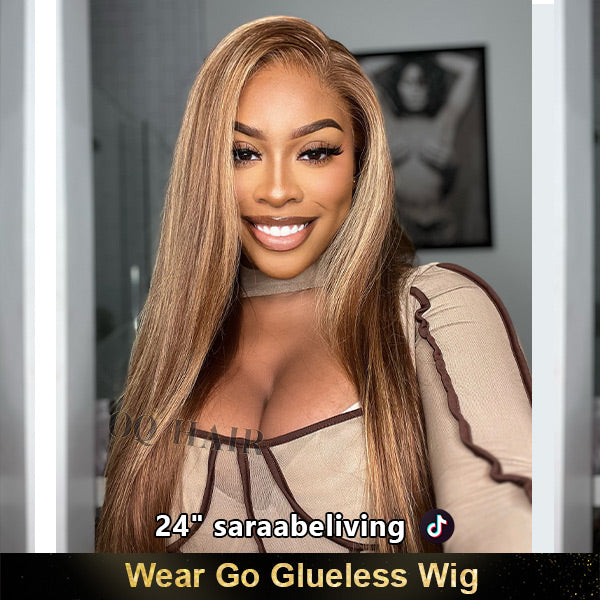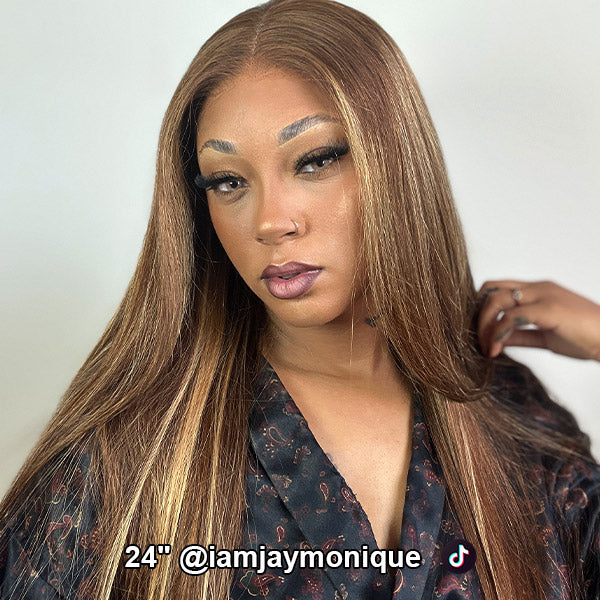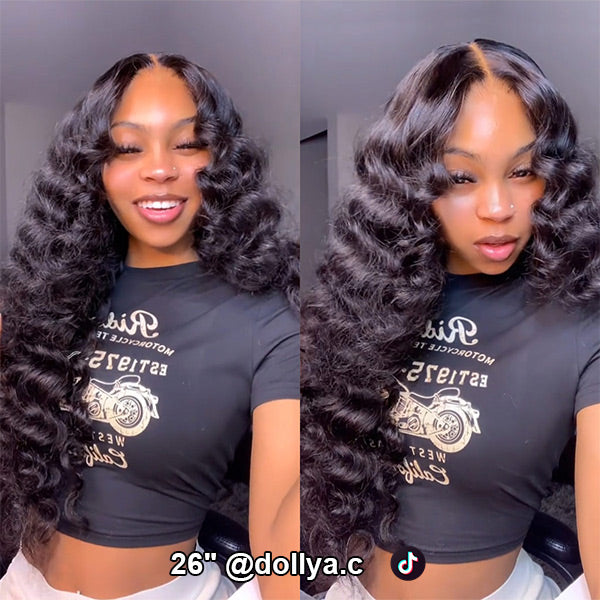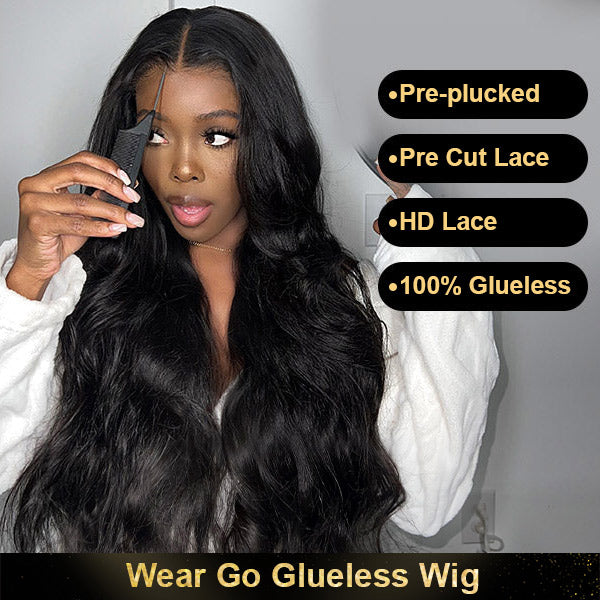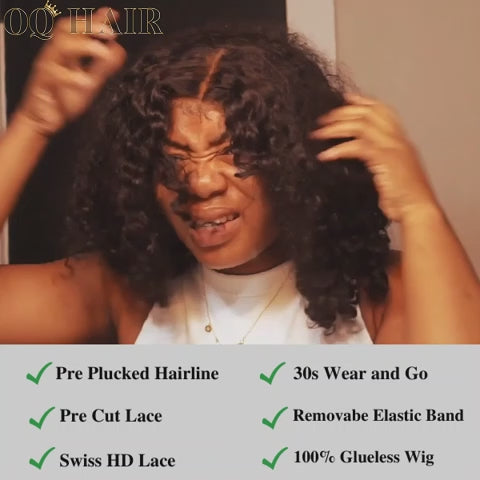How to Stop Wig from Shedding
The overwhelming of dealing with shedding wigs can make people feel frustration and anger. If you have ever found that strands of wig hair from your clothes or furniture, you are not alone. Shedding is a common issue with wigs. In this blog post, we'll guide you through some proven tips and tricks to stop wig from shedding and ensure they stay looking fabulous for longer.

Why is My Human Hair Wig Shedding?
Shedding is a common issue among wig lovers, even with high-quality wigs, and can be caused by a variety of factors. However, if it is excessive the hair might be damaged. Here are possible reasons why your human hair wig is shedding:
1. Initial Shedding
A few hair strands shedding from your first wear new wig is a common and normal situation. This is often due to the manufacturer's process of tying the hair to the lace base. These loose hairs might work their way out initially, causing some shedding.
2. Lifespan of Wig
Just like natural hair, human hair wigs age over time. With repeated wear and styling, the hair fibers can become more delicate and prone to shedding. A human hair wig with proper care can last more than 1-3 years.
3. Low-quality Wig
If the shedding hair length is short, that means the material have the problem, probably unhealthy or mix hair, easy to break. The hair strands sheds from the lace base is highly connect with the hand-tied technique and knot method used for human hair wigs. Low quality wigs might have hair that is not properly secured to the wig cap, leading to increased shedding.
4. Incorrect Handling
Coarse handling and combing through knots roughly can all lead to hair breakage and shedding. Human hair wigs, just like natural hair, are susceptible to damage if not treated gently.
5. Excessive Heat Damage
Excessive use of hot combs, flat straightener, and curling irons can weaken the hair strands and cause hair frizz and shedding. High heat can strip the hair of its natural oils, making it more brittle and prone to breaking.
6. Unsecured Lace Knots
In lace front wigs, where the hair is individually knotted onto the lace, loose knots or knots that haven't been properly sealed can contribute to shedding.
7. Tight and Friction
Tight hairstyles, like ponytails or braids, can create tension on the wig's hair and lead to shedding. Additionally, friction from wearing a wig against clothing, hats, or pillowcases can cause hair to rub against each other and lead to breakage.

How To Stop Wig From Shedding?
1. Choose High Quality Human Hair Wig
Investing in high-quality wigs is the first step to prevent shedding. Opt for 100% human hair wigs which are less likely to shed excessively because they are crafted with attention to detail and use durable materials.
2. Seal the Knots
If your wig is lace front wig, one of the primary sources of shedding is the knots where the hair is hand tied to the lace hole. To minimize this problem, you can apply a knot sealer spray or liquid adhesive to the underside of the lace base. Seal the knots creates a barrier that helps secure the knots and reduces shedding. Also, excessive bleaching knots can lead to wig shedding. If you do not know how to operate, you can through this post to learn how to bleach wig knots properly: How to Bleach Wig Knots: A Beginner-Friendly Tutorial.
3. Treat it with Patience
Treat your wigs with care to minimize shedding. Just like natural hair, avoid scratching your lace root as much as you can, the constant pulling and rubbing can cause the hair to shed. Use a wide-tooth comb or a paddle brush gently detangle the hair. Start from the tips and work your way up towards the roots, holding the hair to prevent unnecessary stress on the wig's construction.
4. Wash with Care
Regular washing is important to maintain the appearance and longevity of your wig, but overwashing or using harsh products can contribute to shedding. Use a sulfate-free shampoo and conditioner specifically formulated for human hair wigs. Gently massage the shampoo through the hair, avoiding vigorous rubbing. After washing, gently squeeze out excess water with a towel, and allow the wig to air dry on a wig stand to maintain its shape.
5. Minimize Heat Styling
Excessive heat styling can weaken the hair strands and lead to shedding. If you need to style your wig, use heat tools sparingly and always apply a heat-protectant spray beforehand. Choose the low heat settings and avoid using direct heat on the wig cap. After washing your wigs, let it air dry. If you must use a hair dryer, use a hair dryer diffuser(especially for curly wigs) and setting cool mode. The diffuser attachment helps distribute the airflow in the hairdryer in a more controlled manner. It minimizes frizz, boosts volume, adds shine and defines curl patterns
6. Reduce the Friction
Friction can cause the hair fibers to rub against each other, leading to shedding. Avoid excessive touching, rubbing, or pulling on the wig. Additionally, consider using a satin or silk pillowcase when sleeping to reduce friction and help maintain the wig's integrity.
7. Store Properly
When you are not wearing your wig, store it on a wig head to prevent tangling. If you do not have a wig head or wig stand, you can read the following article to find alternative methods: How To Store Wigs Without a Wig Head.
Conclusion
With these effective tips in mind, you will keeping your wigs looking flawless and minimize the shedding.
Related Posts
How to Wash a Lace Front Wig
Why are Human-Hair Wigs More Expensive
Wig Prep: How to Make Your Hair Grow Under Wig







